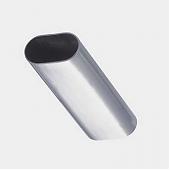DRI production in 2010 sets new record of 70 million tonnes
According to 2010 data compiled, in the last four months of the year, world DRI output averaged 105% of the prior best production rate (summer of 2008); meanwhile, the non China blast furnace iron making industry continued to languish, operating at 85% to 90% of its prior best.
The number one nation for DR iron making was again India as it has been every year since 2003. India’s DRI production was 23.4 million tons, of which 17.3 million tons were made in rotary kilns. Second place was again taken by Iran (which led all nations in natural gas based DRI production) with 9.4 million tons. The next three were Saudi Arabia, Mexico and Russia with 5.5 million tons, 5.4 million tons and 4.8 million tons respectively. Venezuela, which was in first place as recently as 2002 and which made almost nine million tons in 2005, suffered a decline to less than 3.8 million tons, leaving over five million tons of operable capacity unused.
With most of the DR plants being in economies that had already recovered from the Financial Crisis of 2008-2009, the major force on the direct reduction industry was the ever rising cost of its main raw material, iron ore. Fines (63.5% Fe) from India were selling, fob Indian port, at about USD 80 per tonne in December of 2009, but by April 2010 had risen to USD 162 per tonne. Including freight to reach their main destination, the ports in eastern China, prices reached USD 186 per tonne, CIF (delivered). After April, prices slumped slightly, but by December 2010 were back to their highest levels ever. For a long term comparison, these same iron ore fines were selling for USD 13 per tonne to USD 16 per tonne as recently as 1999, only eleven years earlier. The increase has been more than ten to one.
Even with these almost over whelming costs, the prices and values of DRI products were sufficient to inspire continued investment. An overview of new capacity that was commissioned and that was under construction follows.
Related Products

Factory Introduction
316N Stainless Steel Product Introduction
High temperature resistance of 304 and 316 stainless steel